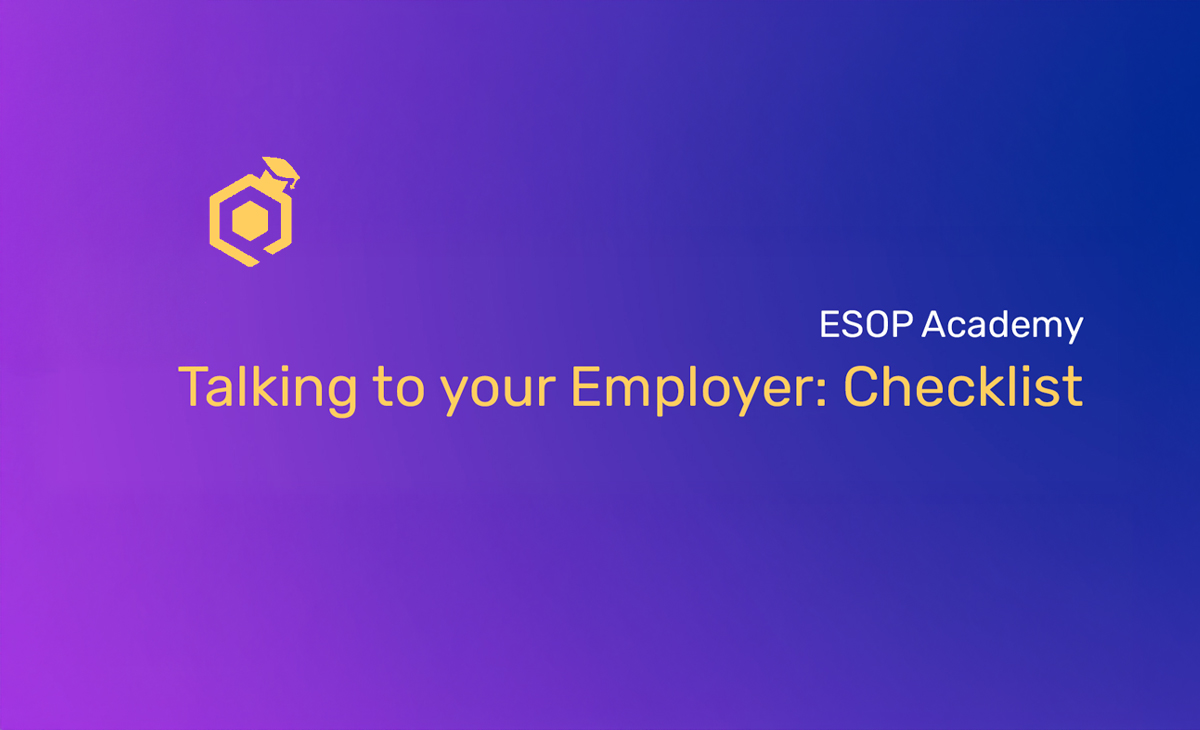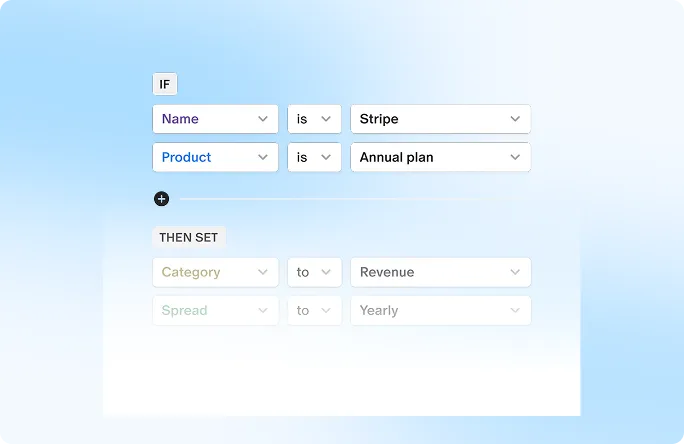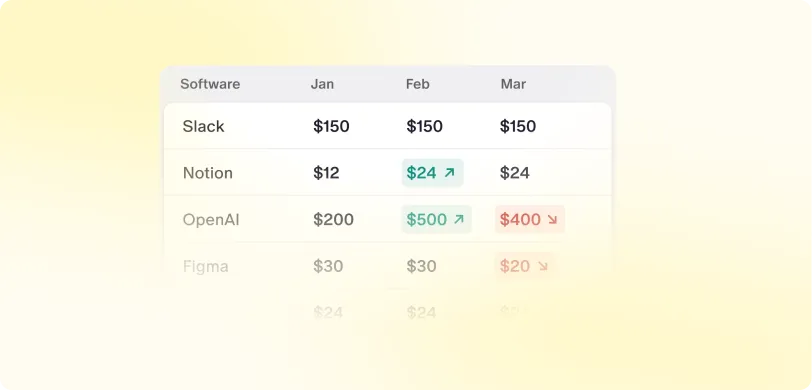This introductory article is designed to help you better understand ESOPs. This edition of ESOP Academy is general in nature and has been prepared for informational purposes only. The article is not intended to provide, and should not be relied on for, tax, legal or accounting advice. You should consult your tax, legal and accounting adviser to discuss your specific circumstances and before engaging in any ESOP transactions.
ESOP Tax Implications
Let's explore the fun part of employee equity world - tax. You must be aware of tax implications of participating in ESOPs and when taxing points are triggered, so you can plan accordingly and not get surprised by amount of tax that may be due at the end of the year.
Understanding various types of equity instruments, and the lifecycle of ESOPs is a good starting point in discovering the general structure of equity awards and transactions. Next, we will try to understand the common triggers for taxation of ESOPs and highlight some of the key aspects of employee equity taxation that you should be aware of. Unfortunately, it is not possible to cover all potential scenarios across the globe in a single guide, but let's give it a shot.
What kind of taxes can be associated with ESOPs?
ESOPs represent the equity component of your total compensation. As such, ESOPs can be seen as an extension of your cash compensation (cash and bonus), and as you might expect, it is common for ESOPs to be subject to income tax, as a result.
Illustration: If you receive $1,000 in salary and exercised your ESOPs and received $200 worth of shares, your taxable income for the year may add up to $1,200. If your tax rate is 20%, your tax bill in this simplified scenario is $240.
When you think about trading shares, capital gains tax comes to mind. In fact, ESOPs transactions, in some circumstances, can also lead to a capital gain or loss. In fact, a single award can trigger either or both income and capital gains tax throughout its lifecycle.
Following the example above, if you sold your exercised ESOPs six months later for a total of $300, the gain of $100 (difference between the sale proceeds of $300 and the original cost basis of $200 upon exercise) could be subject to capital gains tax. It the capital gains tax is also 20%, in addition to $240, you may need to pay additional $20 in tax.
Are there any other taxes I can expect to be subject to? If you end up holding shares and your company pays dividends, you may be also subject to tax on dividends received as a shareholder.
In the same example, if during those six months, before you sold, you received $25 worth of dividends on the share you held, $25 may also be taxed as dividend income. If that's the case, you will need to add another $5 to you tax payment to the local tax authority.
As you can see, the multitude of possible taxing points makes things pretty messy, and the timing of when you may need to pay various types of taxed and the appropriate tax rate and any discounts or concessions applied will depend on your tax jurisdiction and specific type of your plan.
How soon after accepting your ESOP offer are you required to pay tax?
You might think that logical answer here is that tax will be due when you sell your ESOPs. And that is true in a lot of cases. However, taxing point may be triggered as early as grant date.
Tax upfront can be associated with restricted share plans (often referred to as RS or RSA) when you receive actual shares upfront subject to certain restrictions. In the United States, employees have ability to make an election to pay tax upfront instead of deferring it until later date via 83(b) election. In Australia, premium price option plans can be designed in such a way that income tax is triggered on grant, but the reportable value is nil, such that the recipient practically has no income tax to pay on day one and will instead be subject to capital gains tax in future.
Whilst tax upfront is possible, majority of ESOP schemes fall under rules that allow for the taxing point trigger to be deferred until future date. That means that you generally don't pay tax when you receive your ESOP award (on grant date), but you will likely need pay income tax on the value of that award at later date in future. The deferred taxing point can occur at the vesting, exercise, sale, or end of restriction period imposed. What does this mean for you? In some circumstances, you may need to pay income tax on value of your ESOPs before you have or even are able to sell them to get the cash. As you can appreciate, planning ahead to ensure you are able to take care of the tax bill without selling your shares is key.
What's the takeaway here? Always read through the plan documentation and tax guides provided to you at the time of initial grant - these documents generally outline the expected tax outcomes for you. Planning ahead is critical to ensure you are aware when tax may be due.
Are all ESOPs taxed the same?
The answer is no, sorry. Even the same underlying instrument in the same jurisdiction can be taxed differently. Options in the United States are not all treated the same. And this comes down to whether the plan design is considered to be 'tax qualified'. What that means is that the plan is designed in such a way that it takes advantage of preferential treatment allowed under the country's tax legislation if it meets certain criteria. US stock options can be classified as either Incentive Stock Options (ISOs) or Non-Qualified Stock Options (NQs, NQSOs or NSOs). If the option issued to you as an American employee meets certain criteria, you have an opportunity to take advantage of long-term capital gains tax when you transact on your ISOs after a minimum required period of time.
Similarly, in Australia, option plans can fall under start-up concession regime where the employer meets certain requirements, and as a result the employee recipients get to enjoy the benefit of options qualifying for capital gains tax from the grant (think 50% CGT discount if you hold over 12 months even during the vesting period), no income tax payable and taxing point falling at the time you sell. This is quite different to the standard option plans where income tax is deferred until a later taxing point like exercise.
Tax deferral and restriction periods
It is fairly common for ESOPs and tax legislation to be designed such that the taxing point only occurs when an employee actually obtains the financial benefit. To be honest, this actually makes practical sense, but as you have already guessed, not always the case. For a lot of plans across the world, the tax is deferred until such time you convert your ESOPs into shares (e.g. exercise of options). But what happens when even after you reach a point in time where your options are vested should be able to be exercised, yet you are still subject to additional restriction period and can't transact or cash out? Additional restriction period that are imposed by plan rules or by your employer (via trading blackouts or lock-up periods) can mean that your taxing point is deferred even further until such time that all restrictions are lifted, and you are finally free to trade.
How does tax impact salary sacrifice plans?
We've mostly talked about options but what about shares? Employee Share Purchase Plan (ESPP) is a scheme that allow employees to use part of their salary to acquire company shares. Key initial question in relation to tax to ask here is whether the deductions from your pay are done or pre- or post-tax basis? In countries where income tax is withheld by your employer before you receive your pay, will your employer deduct tax first before using your contributions to purchase shares?
Illustration: Salary $1,000, deduction of $100, tax of 20%.
Pre-tax: $100 is taken from pre-tax salary of $1,000, tax of 20% is deducted from remaining $900 dollars. You end up with $100 worth of shares, and $720 in cash after your post-tax salary is paid.
Post-tax: Tax of 20% is withheld on pre-tax salary of $100. $100 is deducted from post-tax amount of $800. You end up with $100 worth of shares, and $700 in cash after your post-tax salary is paid to you.
As you can imagine, plan designed to use pre-tax contributions can allow you to get more value. To compensate for this, post-tax plans often offer additional incentives such as matching shares - for every share you purchase using your post-tax contributions, you receive an additional share purchase by your employer. As you can imagine, those 'free' shares will be subject to tax. We will explore share purchase plans in more detail in a future ESOP academy edition.
And how is tax payable even calculated?
I wish I could tell you it's straightforward, but it's not. Determined the taxing point is just the first step. Next, your tax obligation needs to be calculated. If you sold your shares, sale price is generally used to determine the total amount subject to tax (quantity of shares sold times share price). But what happens when there is no sale, but a taxing point is triggered? What price (aka Fair Market Value or FMV) is used? Well, it could be closing price on the date of the taxing point, closing price the previous day, opening price on the day, average of the open and close price, volume weighted average price (VWAP) of the day, VWAP of the previous five days, and so on. Some jurisdictions, like India, have strict rules of what FMV must be used, others, like Australia, allow employers to pick and choose (as long as it's reasonable) what FMV to use. Confused what that means for you? Fair enough - review the plan rules and talk to your employer to understand how your taxable income will be calculated.
What about cash settled ESOPs?
If you participate in a phantom or cash-settled ESOP, things get a little be easier. Tax obligation will generally be triggered when you receive the cash payment, and it's commonly treated just like any other cash bonus for tax purposes.
What help with taxes will you get from your employer?
Luckily, you are not all alone when it comes to figuring out how ESOPs tax works. Sure, you should be diligent and prepared to take care of your tax liabilities, but governments across the globe put some responsibility on the shoulders of the employers to make your life a little bit easier. How is this done?
1. Tax withholding
Employers in many countries have an obligation to withhold taxes from ESOP transactions. How does that work? If you are about to exercise and sell $1,000 worth of ESOPs and you fall into 30% tax bucket, your employer will be required to ensure that when you sell, $300 is withheld, captured in payroll, and sent to the local tax authority, whereas the remaining $700 is transferred to you. This allows your employer ensure that the tax authority gets their share of the proceeds, and your liability is taken care off immediately. Should any adjustments be required, they are sorted between you and the tax authority at the end of they year as part of your annual income tax return. But for the most part, everything is automatically taken care of for you.
Key consideration for you - if you are in jurisdiction that has a tax withholding requirement for employers, and you are about to transact on $1,000 worth of vested ESOPs - plan ahead as you will only receive the after-tax value following the transaction. So if you need additional $1,000 to fund your upcoming purchase of something nice for your family, you may fall short of your spending target because of the tax withheld before you receive your net proceeds.
2. Tax reporting
If you are in a country like Australia - I have some good news. Your employer has an obligation not only to report ESOP transactions that trigger taxing points for you to the local tax authority, but also issue you with a year-end tax statement that provides the summary and calculations of the data reported. The statement will show you how much needs to be reported in your tax return. If you are an Australian employee, your employee must issue this statement to you if a taxing point occurred for you during the tax year by 14 July (i.e. two weeks after the tax year ends). The same data then must be reported to the tax office by 14 August that same year. Other countries, like the US, also mandate employers to issue year-end tax slips for the employees.
If you are in a jurisdiction like Australia, when you sell your ESOPs, you may get the full $1,000 worth of consideration, since there is no tax withholding requirement. However, you may need to put aside some of the proceeds to be in position to settle you tax bill at the end of the year. Be sure to plan ahead and stay on top of your finances.
What happens if you move between countries for work?
Expats, mobility, and tax. This is a real challenge not only for you if you are in this situation, but also for your employer. If you have received ESOPs and moved countries during your vesting period, things get really messy.
To illustrate the complexity, Singapore has a fairly unique concept called 'Deemed Exercise Rule', and it presents a challenge to non-citizen employees and their employers in the country. The essentially triggers a taxing point on ESOPs when a foreign employee leaves the country, and the tax withholding obligation for the employer.
If you are foreign employee in Singapore that decided to leave the country, trigger of a taxing point on equity that cannot be easily liquidated for cash (due to it being unvested or easily sold if you are working in an unlisted company), can put you in a tricky situation. There is alternative that is called 'tracking option', but in practice, tracking option is not always available, especially for smaller companies, and as result, expats in Singapore must be aware of the unique features of the local tax regime and impact on their ESOPs and potential tax obligations.
If we continue with this scenario - employee who moved from Singapore to another country, in addition to the tax obligation in Singapore, may also be subject to tax in their new country of residence. What if they move more than once during the vesting period? As you can imagine, it's not just the individual rules in each of the countries that will be important, but who do these rules interact and what tax treaties the countries have in place will also play a part. Taking care of tax in one country is hard enough - imagine doing it in two or more!
Best practice is for all employers to highlight the prospect of specific taxation requirements to their employees upfront to ensure they have a full picture of possible tax implications down the track. Ideally, you have access to that information. Is that the case at your company? If not, have a conversation with your HR, Reward or Finance team to see how they can help you out.
TLDR?
Taxation of ESOPs is inconsistent across the globe. You may be required to tax at vesting, exercise, sale, and even before your ESOPs actually vest or as early as the initial grant date. What a mess! Your best bet is to carefully read through plan documentation your employer provides you, including any tax summaries and guides, to ensure you are fully aware of all the pitfalls of ESOPs, including tax. Luckily, there are plenty of available materials online to get you started to understanding taxation implications for equity awards in your jurisdiction. In all cases, the best approach is to ask your employer for help, and to seek professional advice from your tax adviser.
What's next?
Tax is not the only topic that you should bring up when you talk to your employer. There are plenty of areas you should cover of when you negotiate or simply seek to understand the ESOP offer you receive from your employer. Next week, ESOP Academy will present you with a checklist of all the key questions you should be asking your employer, so you are in the best position to make the right decision when it comes to your equity stake.


 Equity management
Equity management

 Fund management
Fund management

 Fund management
Fund management

 Fund management
Fund management












































